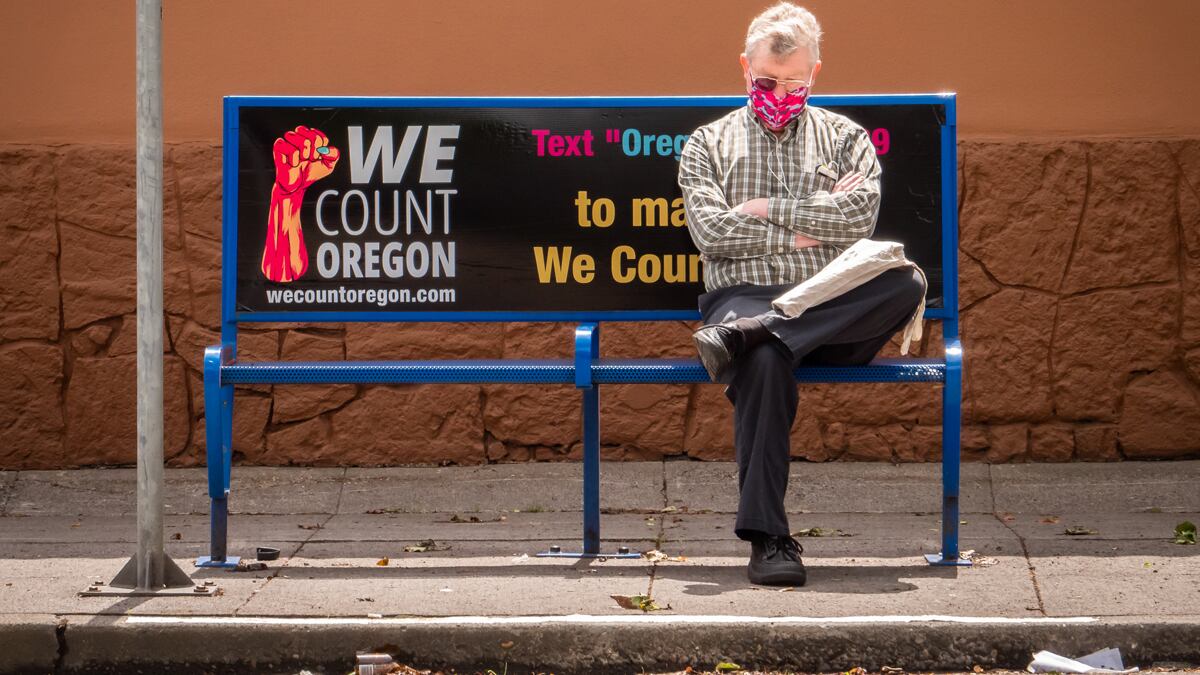This month, regional government Metro referred to the November ballot the largest tax measure in Portland history: $5 billion for transportation, including a light rail line to Tualatin. Metro is plowing forward in the middle of a pandemic, against the outcry of business owners, because it says the need is urgent.
"The time to act is now," Metro Council President Lynn Peterson told WW before the referral of the measure. "If we delay, we will not be able to create tens of thousands of jobs when we need them most, and our region could miss opportunities to leverage federal, private and philanthropic funds."
But Metro is taking a big gamble at a moment of rapid change. That unpredictability extends to transportation. The fallout from COVID-19, social distancing and the economic downturn are changing American traffic patterns and may result in other, more drastic changes in how people commute.
Already, some in the car industry predict a decrease in driving. Will that chilling effect extend to MAX?
WW spoke to a half-dozen longtime observers of transportation patterns. Some say there's no way to predict what the pandemic will mean for roads and rail.
"We should at least hold off making big investments until we see how this shakes out," says economist Joe Cortright. "There's no need to spend billions on the Metro package, or on the Rose Quarter or the Columbia River Crossing, if commuting is going to go down. These are mostly 50-to-100-year investments, and it's worth waiting one to two years to see whether this prediction comes true."
Peterson says while it's necessary to start the work now, some of the projects she's sending to voters in a package called Get Moving PDX are a long-term effort that can be adjusted to match demand.
"Our planning and research teams are closely monitoring and studying COVID-related trends in transportation around the world, as well as what we can learn from other disruptive events in the past," says Peterson. "Get Moving is a long-term effort. If voters approve the measure, some projects will get underway as soon as next year. Others will begin later in the decade."
But the pandemic presents three central questions about how people will travel for the foreseeable future. Metro will have to confront all three between now and November.
More people are telecommuting. How much of that will last?
Portland may continue to see a wide swath of the population work from home and shop online.
"There's a huge amount of uncertainty," says Cortright. "There's been a shift in the adoption of things like work at home and e-commerce. Work trips and shopping trips account for half of transportation in the U.S. If people change their behavior to take fewer trips, you've reduced the pressure on the transportation system."
And it could impact voters' support, given that homelessness, policing, protests, the coronavirus and the economy all ranked as higher priorities, according to survey results released by opponents of the measure.
Fewer people are commuting by public transit. Will that last?
The first months of the pandemic saw TriMet actually encourage its riders to stay off trains and buses unless they were commuting to essential jobs. The regional transit agency is slowly ramping up capacity—but will public confidence follow?
"Concerns about the coronavirus, and a commitment to physical distancing, has led to a plunge in TriMet ridership, says Andrew Hoan, who is president and CEO of Portland Business Alliance, a leading opponent of the measure. "Billions of dollars are at stake and there has been zero re-evaluation of this measure since we entered the post-pandemic reality."
A study of COVID-19 infections on the Tokyo subway found low virus transmission on trains. If Oregonians adopt mask wearing and otherwise feel secure, that could add to ridership.
Proponents of the measure say those who need public transportation most have continued to ride and will do so into the future. Even without a return to public transportation, the investments are necessary for people who will ride regardless.
"We cannot ignore the fact that people are starting to go back to work [and] that some folks' work has involved commuting by bus this entire time," says Richa Poudyal, advocacy director of the Street Trust. "People, especially low-income and communities of color, are going to continue to rely on public transit to get to where they need to go."
Will the business district downtown bounce back?
Even if Portlanders commute to work and shop, will their destination still be downtown?
The downtown business community has taken a significant economic hit. It's clear some small businesses won't be back. And downtown office workers may opt to telecommute.
That could affect who uses the biggest investment of the Metro measure — a near-billion-dollar investment in a new MAX line through Southwest Portland and the 'burbs.
Supporters of the measure say it's still necessary. "I believe a combination of creating a culture of mask wearing, better sanitation measures, and vaccines will let people feel comfortable about transit within that 12-to-24-month period," says Chris Smith, a candidate for the Metro Council. "As far as the Southwest Corridor goes, I think of our high-capacity transit investments in a 50-to-100-year frame, and it's important to keep developing the backbone network."
Peterson argues the Southwest Corridor is not simply about downtown.
"Downtown Portland is still the economic engine of our region," says Peterson. "But the Southwest Corridor is a project to serve the region. Workers at Bridgeport Village, nurses and doctors at [Oregon Health & Science University], and students at Portland Community College and OHSU are all key, planned riders. And the corridor plan includes millions of dollars of investments in streets and sidewalks in the vicinity of the project, along with community stabilization efforts to limit displacement and support small businesses."
